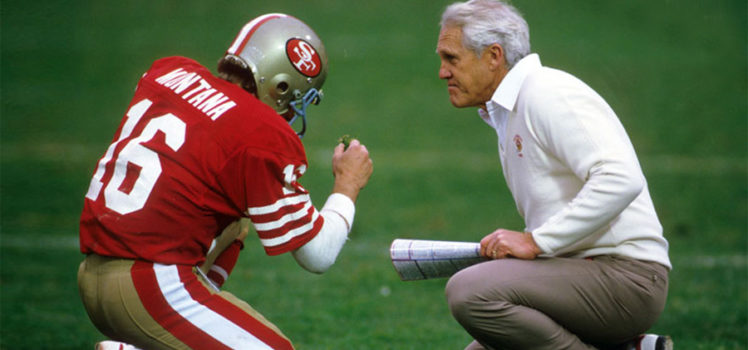Where Great Leaders Are Grown

A key aspect of leadership is developing young leaders, training them to become what you already are. To be the mentor of future leaders is not only an exciting journey but a commission for believers. 2 Timothy 2:2 is our model and Jesus our example. My friend John Armstrong has captured the essences of this concept in the guest blog I have chosen to post. I suggest you check out his website at https://www.growmyleadership.com/
Where Great Leaders Are Grown
by John Armstrong
Recently I came across a statement and it setup shop in my head.
“In 1998, half of the active head coaches in the National Football League could be traced to Bill Walsh and Tom Landry. Of those 15 coaches, four (plus Walsh and Landry) had coached a Super Bowl winning team.” – John Maxwell
That many NFL coaches being traced back to only two key coaches and almost half of them with Superbowl wins is pretty incredible.
So I did some digging, and found this picture on Wikipedia.
(Source: https://en.wikipedia.org/wiki/Coaching_tree)
Bill Walsh took the 49ers from one of the worst teams in the NFL, to Superbowl champions in just three seasons.
Now I’m so impressed, I bought Bill Walsh’s book on leadership and plowed thru it in pretty short order.
So how does one coach produce so many successful coaches?
Here is how Walsh himself characterized it: “People say there are winners and losers in life. But typically, it’s more like this: There are winners, and there are people who would like to be winners but just don’t know how to do it. Intelligent and talented people who are motivated can learn how to become winners if they have someone who will teach them.”
Going even further, he says this: “Fourteen of the assistant coaches who worked with me at San Francisco went on to head coaching jobs in the NFL or at the college level. I believe a big part of the reason for this extraordinary upward mobility was that they were fully included in the communication and collaborative decision-making process during their tenures with me. They were also good listeners.”
Walsh then reveals why this was important along with how to do it: “That process—seeing someone I had evaluated, selected, and taught break out and do great things—is what it’s really all about for me, the source of my greatest pleasure in leadership. In my experience, this is what it takes to be a good teacher: passion, expertise, communication, and persistence.”
Walsh is very practical and throughout the book gives a number of checklists that are down to earth and very relevant. Here are a few:
- 12 habits that will make you a better leader
- Keeping good staff members on the same page
- Personal qualities—assets—in potential staff members
- Fending off the fallout of success disease
- Things that really matter
- What it takes to be a good teacher
- How to keep your eye on the ball
- 9 steps you can take that involve treating people right
- 10 nails you can pound into your professional coffin
Most books work hard to help us be successful leaders, but unlike everyone else, Walsh takes the time to deal with the downside that come with being successful. He calls it the success disease.
Have you ever wondered why no NFL team has ever won more than two Superbowls in a row?
“How else can you explain that in the season immediately following that championship—Super Bowl XVI—and with virtually the same personnel, we lost twice as many games as we won in that strike-shortened season? The explanation is, in part, quite simple: Success Disease.” – Bill Walsh
“Repeat winners at the high end of competition are rare, because when success of any magnitude occurs, there is a disorienting change that we are unprepared for.” – Bill Walsh
If you buy Walsh’s book and only read the success disease section, you will have invested wisely.
“Ongoing applause can turn the head of the most disciplined and determined member of your team. Watch that it doesn’t turn your own head.” – Bill Walsh
Bill Walsh devotes a whole chapter to the four magical words that turned two average quarterbacks, Joe Montana and Steve Young into famous hall of famers.
He then develops why and how those same four words can get your team to move from average to awesome. Walsh masterfully illustrates how and why every leader needs these four words in their toolbox.
At the end of the book, Walsh opens his heart and shares some very intimate stories about losing at winning. The transparency is very compelling as he gives you a sneak peek into his inner world, sharing the pain and regret he had as a leader.
Using these intimate stories, he paints a great picture of the pain followed by some really key thoughts on what is needed to sustain your ability at being a winning leader.
Reading the book allows each one of us to be shaped and mentored by a champion and gives Bill Walsh input into our leadership. In a small way, adds our names to his coaching tree. But even more importantly, gives us insight and wisdom to create and grow our own leadership coaching tree.
You can get the book, “The Score Takes Care of Itself” on Amazon: http://amzn.to/28JS9Bk





